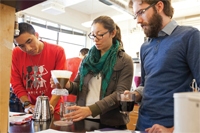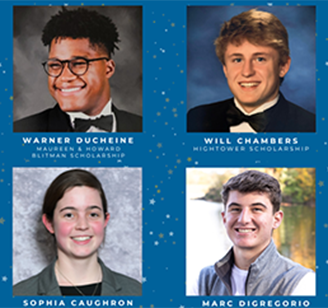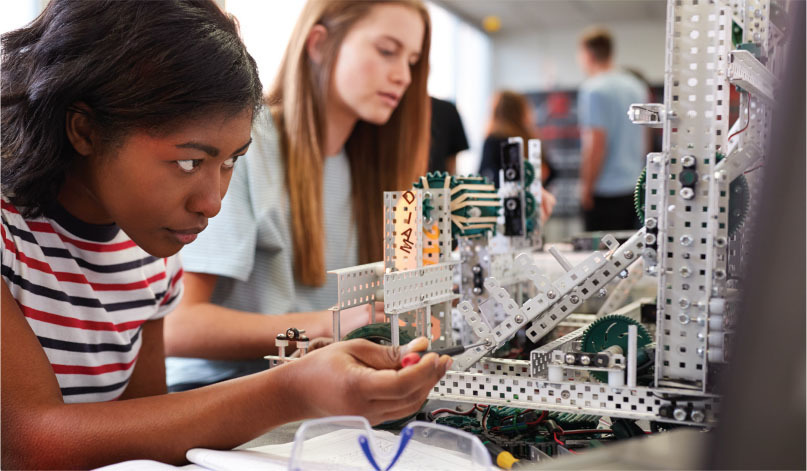January/February 2014
COMMUNITIES: EDUCATION
Engineering the Perfect Cup
Last spring, chemical engineering professors Tonya Kuhl and William Ristenpart had the unique experience of having to force students to leave a laboratory. “I just want to try one more thing,” the students would say. “We had to tell them, ‘It’s 15 minutes after we’re supposed to be out of the space,’” explains Kuhl.
What got students so engaged? A course developed by the University of California, Davis professors: “The Design of Coffee.” The class, first offered in spring of 2013 as a freshman seminar and slated to expand to a full-fledged course in January, will provide an overview of chemical engineering as seen through the lens of coffee brewing.
The expanded class will be offered in two different versions: a general science elective that will provide a nonmathematical introduction to how engineers approach and solve problems and a version for chemical engineering students that is more “quantitative,” according to Ristenpart, with an additional lecture per week.
Although both courses are geared toward freshmen (the version for chemical engineering students will be the first required course in the major), the general science class has enrolled students in more than 50 disciplines from freshman to senior level and even some engineering graduate students. “We are pretty sure they are coffee lovers and want to take the course because of their interest in coffee and the hands-on laboratory experiences and design that the course offers,” says Kuhl.
In both classes, students learn about chemical reactions, mass transfer, fluid mechanics, and optimization as they collaborate in teams of three to brew the best-tasting coffee using the least amount of energy. A blind taste test with a judging panel—along with a calculation of energy expended to create a liter of the coffee—results in a ratio that crowns the winner at the end of class.
Students have to make choices such as which type of beans to use, how long to roast them (darker roasts result in more of the typical coffee taste but also require more energy), and how much to heat the water (cooler water saves on energy but then the flavor extraction is “suboptimal,” says Ristenpart).
“It was amazing when we did the freshman seminar trial run how diverse the coffees were,” he notes. “Some were like battery acid. Some were delicious. There was quite a bit of variety based on design choices.”
The freshman seminar launched with 18 students. Now the general education section will comprise 300 with 60 on the waiting list, and the chemical engineering section will include another 160 after adding an extra section. The professors say they’re working hard to keep up with demand and they hope to eventually expand the class to other departments and universities.
Kuhl says The Design of Coffee, which engages students by allowing them to problem solve under their own direction, is the most enjoyable course she’s ever been involved with. A student told her it was the best class he’d ever taken.
But the course also has wider implications.
For chemical engineering majors, the class can provide meaningful lab experience to keep them engaged and retained before they’ve gained the training to handle dangerous chemicals.
And Kuhl envisions first-generation students better able to explain their major to their parents back home through the metaphor of coffee.
In addition, she explains that she and Ristenpart hope to lure some of the general education students into chemical engineering—or at least to better inform them how engineers approach problems and design processes. Ristenpart points out that The Design of Coffee can give a wide variety of students a better understanding of the profession that goes beyond the image of “smokestacks polluting the environment or [engineers] adding toxic chemicals to food.” Instead, he stresses, students can better understand that the field is a “quantitative way of thinking about the world around us and how to design things in an optimal order.”
“Chemical engineers will take over the world,” says Kuhl. “Via coffee,” adds Ristenpart.


 Volunteering at NSPE is a great opportunity to grow your professional network and connect with other leaders in the field.
Volunteering at NSPE is a great opportunity to grow your professional network and connect with other leaders in the field. The National Society of Professional Engineers (NSPE) encourages you to explore the resources to cast your vote on election day:
The National Society of Professional Engineers (NSPE) encourages you to explore the resources to cast your vote on election day: Students in the design of coffee class make decisions about bean roasting time, water temperature, brewing process, and more to create the ideal cup.
Students in the design of coffee class make decisions about bean roasting time, water temperature, brewing process, and more to create the ideal cup.



